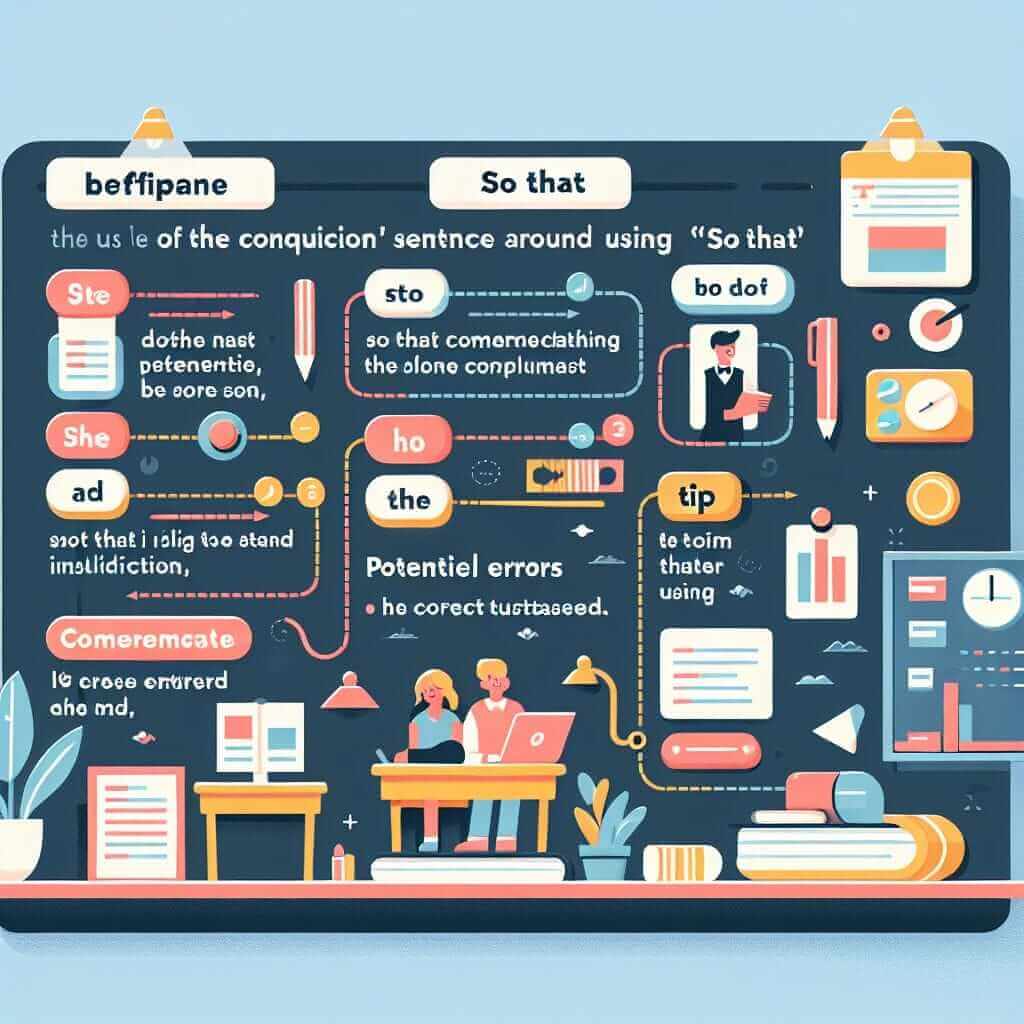The phrase “so that” is a grammatical structure often encountered in the IELTS exam, particularly in the Writing and Speaking sections. It indicates purpose or intention and showcases a nuanced understanding of English grammar and sentence structure.
Let’s look at a few examples of how “so that” can be used across different sections of the IELTS exam:
Speaking Part 2: Describe a time you had to wait for something. What did you do while waiting? Why did you decide to wait?
“The queue was incredibly long, so I took out my phone and listened to music so that I wouldn’t get too bored.”
In this case, “so that” explains the purpose of listening to music – to avoid boredom.
Writing Task 2: Some people believe that technology has made our lives easier. Others argue that it has made our lives more complex. Discuss both views and give your own opinion.
“While technology has undoubtedly brought numerous conveniences, some argue that it has also led to increased social isolation, as people spend more time interacting online than in person. This isolation can have a detrimental effect on mental health, so that it is crucial to find a balance between online and offline interactions.”
Here, “so that” emphasizes the importance of striking a balance due to the potential negative consequences.
Understanding the Usage of “So That”
The phrase “so that” establishes a cause-and-effect relationship between two clauses, highlighting the intention or desired outcome of the first clause. It’s essential to remember that “so that” is typically followed by a subject and a verb, forming a subordinate clause of purpose.
Using “So That” in Your IELTS Exam
Formula and Grammatical Points:
Main Clause + so that + Subject + Verb
- Main Clause: This part of the sentence expresses the action taken or the situation that exists.
- So that: This conjunction links the main clause to the purpose clause.
- Subject + Verb: This forms the subordinate clause explaining the intended outcome.
Applying “So That” to Different Sections of the IELTS Exam:
- Speaking: Use “so that” to provide reasons for actions or decisions, making your responses more cohesive and demonstrating a strong command of grammatical structures.
- Writing: Employ “so that” to connect ideas logically and present arguments effectively, especially when explaining the consequences or purposes of actions.
Sample Sentences:
- Speaking: “I decided to take the earlier train so that I would have enough time to explore the city before my meeting.”
- Writing Task 1: “The company’s profits decreased sharply in the second quarter, so that they were forced to lay off some employees.”
- Writing Task 2: “Governments should invest in renewable energy sources so that we can mitigate the effects of climate change.”

Achieving a Higher Band Score
To impress the examiner and achieve a higher band score, consider these tips:
- Vary your language: While “so that” is useful, explore synonyms like “in order to,” “to,” or “so as to” to demonstrate a wider range of grammatical structures.
- Use a range of complex structures: Combine “so that” with other grammatical structures to form sophisticated sentences and showcase your grammatical range. For example: “Despite the heavy rain, they continued working diligently on the project so that they could meet the deadline.”
Common Mistakes to Avoid
- Incorrect verb tense: Ensure the verb tense in the subordinate clause agrees with the tense used in the main clause.
- Using “so that” for reasons: While “so that” indicates purpose, use conjunctions like “because” or “since” to express reasons.
- Redundancy: Avoid using “so that” excessively in your writing. Sometimes, a simpler structure may be more effective.
Conclusion
Mastering the use of “so that” can significantly enhance your grammatical accuracy and fluency in the IELTS exam. By understanding its function, practicing its application, and avoiding common pitfalls, you can confidently incorporate this structure into your speaking and writing, effectively conveying purpose and demonstrating your language proficiency. Continue exploring different grammatical structures and their applications in various contexts to refine your language skills further. For more information on using conjunctions like “so that” effectively, you can check out this helpful resource: [link to https://www.ielts.net/use-of-so-that-for-purpose/ using anchor text like “using conjunctions effectively”].